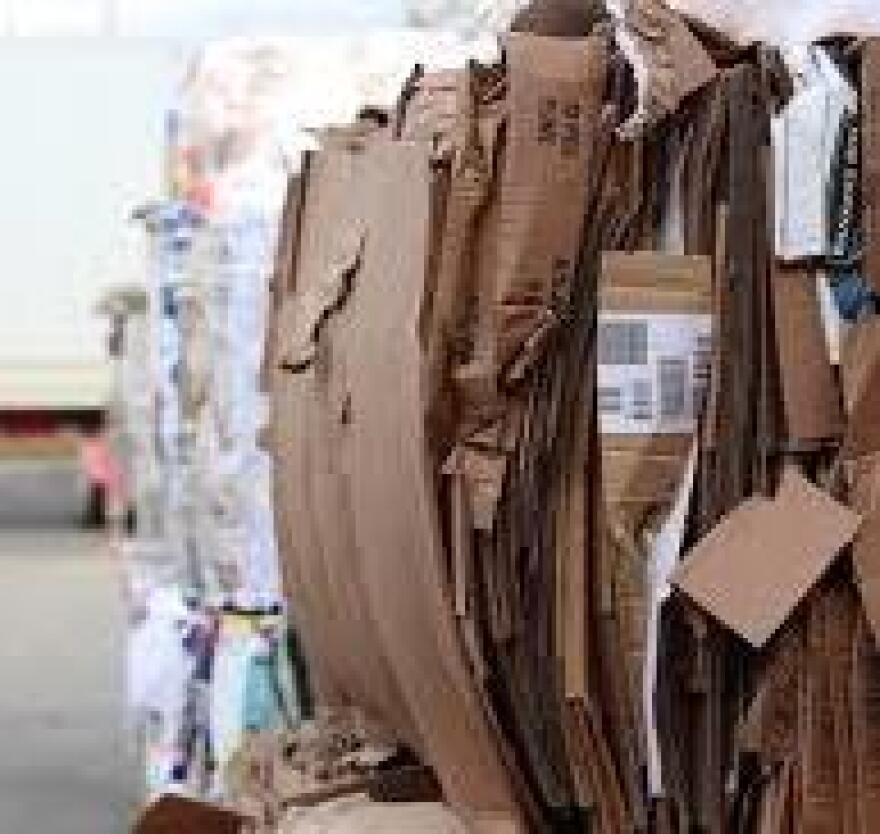Since it opened nearly six months ago, the Fairbanks North Star Borough’s Central Recycling Facility has kept more than 367 tons of materials from being dumped into landfill. The recycling manager says he and his partner organizations would like to expand the program, but he says staff will focus on an making the operation more efficient and customer-friendly.
Central Recycling Facility manager Sean Huntington says he’d like to extend the facility’s hours of operation and collect more types of materials there. And he says many borough residents seem to feel the same way.
“We have a lot of people who show up at like 10 or 11, thinking it would be open,” he said in an interview last week.
But the facility doesn’t open ‘til 12 noon Tuesday through Friday, and closes at 5:30. On Saturdays, it’s open 9 to 5. Huntington says during those hours of operation, he and his staff often hear customers say they wish the facility accepted a greater variety of materials, besides paper and cardboard, plastic bottles and jugs, aluminum cans and old electronics.
“But we’re starting out small,” he said. “We didn’t want to put too much on the facility. We wanted to learn how things are going – get a finely tuned machine before we start expanding with materials or hours or whatever.”
But in order to rev the finely-tuned machine, Huntington says he and staff need more data in order to determine the demand for expanding the program. He says they also need ongoing analysis of the notoriously volatile recyclable-material market. And, most challenging, there’s the borough budget that’s stretched thin by years of state funding cuts and a limited ability to raise revenues locally.

“With the budget status that the borough’s in, we don’t know how much more we can expand, right now.”
Huntington says in the meanwhile he and his staff will do all they can to make the facility as efficient as possible, in anticipation of an uptick in materials collection in the coming months as people begin spring cleaning and preparation for summer projects. He says they’re also working to inform customers about the need to bring only acceptable materials to the facility and to pre-sort them before they get there.
“If you can sort your materials prior to arriving, it makes it a lot quicker, and it doesn’t slow up the traffic,” he said. “Because when somebody is up front and they have a truckful of stuff that have yet to sort, it takes time.”
Huntington says his staff will encourage customers to pre-sort, and he says they’ll be placing signs around the facility to remind customers. He says its nonprofit recycling partner, Green Star of Interior Alaska, is working on a user-friendly upgrade for the borough facility’s website that’ll include messages on the need to pre-sort and other important information – such the location of other collection centers that accept other materials, like steel cans and scrap metal.
“There’s two places that I know of: C&R Pipe (and Steel) is off Van Horn and Cushman, here in Fairbanks. Then a place in North Pole, K&K Recycling.”
Huntington says Green Star also is putting together an updated version of its recycling guide pamphlet that it’ll have printed and mailed out by the end of March.
“We’re hoping that it hits a lot of the residents here in the borough, and they just don’t simply discard that.”
But Huntington says if they aren’t interested and do discard the pamphlet, he hopes they do so in a recyclable container – and then drop it off at the facility, along with the rest of their recyclables.



